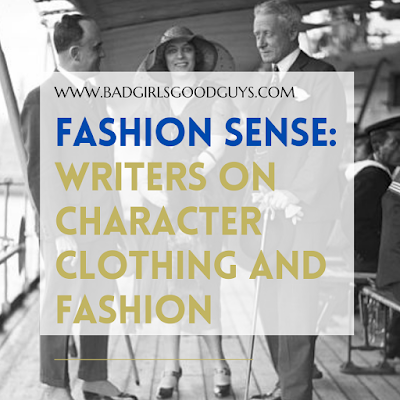Fashion Sense (Writers on character clothing and fashion)
For this week’s roundtable, let’s talk fashion. No, not your own, but that of your characters.
How much do you use your narrative to draw attention to your characters’ clothing choices?
Tom Hutchison: In comics, design is a huge key. In novels far less so. So it depends on what you’re talking about. Design for my comics is super important and we dwell on details and reasons for things to be part of the clothing/equipment/scene etc. there are reasons for everything and it comes through on the page and through the storytelling.
John L. Taylor: I write Dieselpunk fiction and horror in retro settings. Describing the clothing right does a lot when I don’t have illustrations to convey a character. In the Dieselpunk example, My protagonist was a working-class hero, a pilot who did mercenary work to care for her orphaned siblings. Things like oil stains, torn patches, and worn flight caps help sell the idea of a hard-fighting rogue with money problems. Conversely, in horror, a character’s clothing can both generate a sympathetic mental image or drop subtle hints about motivations. My personal favorite work of my own is a story called “What gasoline won’t burn.” It’s a story set in 1950 in rural Missouri and narrated by a very naïve 8-year-old girl. I described her as looking like something off of a Little Debbie’s or raisin box. I had to both sell the reader on the era it was set it (put this way, the plot wouldn’t work in a world with cell phones), and the almost cartoonish innocence of the Narrator. People criticized me some over how naïve she was, but that was the source of the horror: her being too sheltered to see what was coming until was too late for her grandparents, while the reader has to follow in dreaded anticipation of the world going to hell around such a poor, sweet, undeserving soul. The other characters’ clothing has subtle tells of what role they will play, but the whole effect had to create a sense of looming dread of the inevitable. Without these descriptions, this wouldn’t be so effective.
Ernest Russell: Generally, I do this as needed as part of an overall description. If there is need for .ore detail, or it is intrinsic to the character, I add more detail.
Bobby Nash: I make sure the audience knows what the characters are wearing, even if just in generalities ala jeans and a t-shirt or they’re wearing a gray suit. Some characters get more, depending on who they are and if it fits their character’s needs.
John Linwood Grant: What people do with their clothes is sometimes more interesting than the exact nature of the garment/accessory, e.g. someone who goes to great lengths not to spoil their get-up, someone who plays with gloves or a hat as a sign of emotion, or wears clothes that their peers would not have expected.
Hilaire C Smith: I don’t like to beat them over the head with a page of detailed description, mind, but clothes are very often a reflection of us as people OR the image we want to project to others. So, I used that with my characters. Sometimes I take that first impression and slowly mold it into something different and sometimes it is exactly who the character is.
#amwriting #fiction #writing #storytelling #writers #authors #blogging #blog #indipenned #indisciple #fictionwriting #bookstagram #WritersLift #WritingCommunity
https://seanhtaylor.blogspot.com/2021/05/fashion-sense-writers-on-character.html

